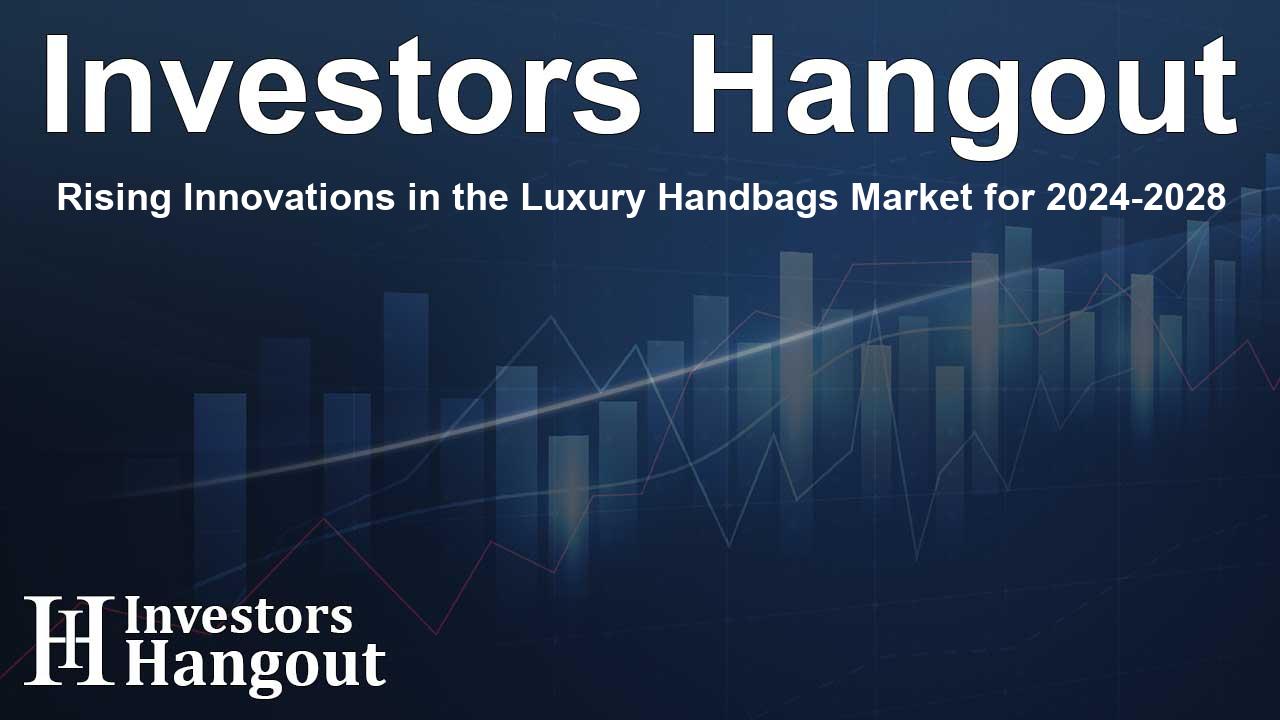Rising Innovations in the Luxury Handbags Market for 2024-2028

Exploring the Future of the Luxury Handbags Market
The luxury handbags market is poised for remarkable growth, estimated to climb by USD 24.73 billion between 2024 and 2028. The driving forces behind this anticipated increase are rooted in significant innovations in design and materials. A key aspect of this evolution is the rising influence of artificial intelligence (AI) on market trends, paving the way for personalization and customization.
Market Analysis and Growth Drivers
For the projected period, the market is expected to grow at a compound annual growth rate (CAGR) of 6.34%. This growth is heavily influenced by the ongoing trend towards premiumization, where quality and uniqueness become top priorities for consumers. Shoppers are more inclined to seek out bespoke products that reflect their individual tastes, often leading to a greater demand for high-quality, customized handbags made from luxurious materials such as leather, silk, and even precious metals.
Customization Trends
One of the most compelling factors driving this market evolution is the customization trend. Consumers increasingly desire handbags that resonate with their personal style, driving brands to offer options like monogramming and bespoke design elements. Companies such as Capri Holdings are at the forefront, allowing consumers to tailor their handbags from components like straps to intricate embroideries. This shift demonstrates a growing inclination toward unique luxury items that stand out in a saturated market.
Challenges Facing the Luxury Handbag Sector
Despite its promising trajectory, the luxury handbag market encounters significant challenges, particularly from counterfeit products. The proliferation of fake handbags, especially in developing markets, poses risks not only to sales but to brand integrity as well. Counterfeit goods typically leverage low-quality materials, instilling concerns regarding safety and health among consumers. As e-commerce expands, counterfeiters gain easier access to distribution channels, complicating the struggle for authentication of products.
The Role of Technology
In tandem with these challenges, technology continues to reshape the luxury handbag landscape. Retailers adopt innovative solutions, such as augmented reality, allowing customers to visualize products in virtual formats before making purchases. This technology enhances the shopping experience and builds consumer confidence, vital for cultivating brand loyalty.
Shifting Consumer Preferences
In recent years, influences from social media and celebrity endorsements have become pivotal in shaping consumer preferences. Today's shoppers, particularly the millennial and Gen Z demographics, gravitate towards limited-edition releases and tailored products as markers of status and sophistication. The demand for vintage and pre-owned handbags is also on the rise, as many consumers look to unique pieces with story and history.
Market Segmentation Insights
The luxury handbags market can be segmented on various fronts, including distribution channels and types of products. The emergence of online retail has transformed traditional sales methods, making luxury handbags accessible to myriad consumers. Here are the key segments:
- Distribution Channel:
- Offline Stores
- Online Retail
- Type of Handbags:
- Handbags
- Backpacks
- Wallets
- Others
- Geographical Distribution:
- Europe
- North America
- Asia-Pacific
- South America
- Middle East and Africa
Market Outlook and Opportunities
As brands continue to innovate, the luxury handbag market is expected to grow robustly, fueled by evolving consumer behaviors and preferences. The increasing focus on sustainability and ethical production further amplifies market dynamics. Luxury brands are now exploring eco-friendly materials, making headway towards responsible luxury that appeals to environmentally-conscious consumers.
In conclusion, the luxury handbags market stands on the verge of a significant transformation. With the infusion of AI, customization options, and innovative technology, the future of this market looks bright, promising a wealth of opportunities for both established and emerging brands.
Frequently Asked Questions
What is the projected growth of the luxury handbags market?
The luxury handbags market is projected to grow by USD 24.73 billion from 2024 to 2028.
How does customization impact consumer choices in luxury handbags?
Customization allows consumers to express their personal style, making handbags more unique and desirable.
What are the main challenges in the luxury handbag sector?
The primary challenges include counterfeit products and rising production costs due to technology integration.
How is technology transforming the luxury handbag industry?
Technology, such as augmented reality, enhances shopping experiences, helping consumers visualize products before purchasing.
What trends are shaping the luxury handbag market?
Key trends include a focus on sustainability, increased demand for vintage items, and the influence of social media on consumer preferences.
About The Author
Contact Ryan Hughes privately here. Or send an email with ATTN: Ryan Hughes as the subject to contact@investorshangout.com.
About Investors Hangout
Investors Hangout is a leading online stock forum for financial discussion and learning, offering a wide range of free tools and resources. It draws in traders of all levels, who exchange market knowledge, investigate trading tactics, and keep an eye on industry developments in real time. Featuring financial articles, stock message boards, quotes, charts, company profiles, and live news updates. Through cooperative learning and a wealth of informational resources, it helps users from novices creating their first portfolios to experts honing their techniques. Join Investors Hangout today: https://investorshangout.com/
The content of this article is based on factual, publicly available information and does not represent legal, financial, or investment advice. Investors Hangout does not offer financial advice, and the author is not a licensed financial advisor. Consult a qualified advisor before making any financial or investment decisions based on this article. This article should not be considered advice to purchase, sell, or hold any securities or other investments. If any of the material provided here is inaccurate, please contact us for corrections.
